
Purple Turtle Beach: Dominica’s Coastal Gem
Experience the tranquil beauty and vibrant marine life of Purple Turtle Beach in Dominica, a perfect getaway for nature lovers and adventure seekers alike.
Purple Turtle Beach in Dominica is a hidden treasure waiting to be discovered. Located on the northwest coast of the island, this beach offers a spectacular blend of lush greenery and crystal-clear waters. The unique name 'Purple Turtle' hints at the vibrant marine life and colorful corals you can see when snorkeling or diving in its warm waters. The beach is a serene escape from the hustle and bustle, perfect for those seeking relaxation and natural beauty. The sand is soft and inviting, making it an ideal spot for sunbathing or enjoying a leisurely walk along the shoreline. The surrounding area is rich with local culture, and you can often find vendors selling fresh seafood and tropical fruits. Purple Turtle Beach is also a gateway to adventure. The nearby Cabrits National Park offers hiking trails with stunning views, and the calm waters are perfect for kayaking and paddleboarding. Whether you're a nature lover, an adventure seeker, or someone looking for a peaceful retreat, this beach has something for everyone.
Local tips in Purple Turtle Beach
- Bring snorkeling gear to explore the vibrant underwater world.
- Visit early in the morning or late in the afternoon to avoid crowds and enjoy the serene atmosphere.
- Try the fresh seafood from local vendors; it's a must-have experience.
- Pack sunscreen and insect repellent to stay comfortable throughout your visit.
- Take a short trip to Cabrits National Park for hiking and breathtaking views.
Purple Turtle Beach: Dominica’s Coastal Gem
Purple Turtle Beach in Dominica is a hidden treasure waiting to be discovered. Located on the northwest coast of the island, this beach offers a spectacular blend of lush greenery and crystal-clear waters. The unique name 'Purple Turtle' hints at the vibrant marine life and colorful corals you can see when snorkeling or diving in its warm waters. The beach is a serene escape from the hustle and bustle, perfect for those seeking relaxation and natural beauty. The sand is soft and inviting, making it an ideal spot for sunbathing or enjoying a leisurely walk along the shoreline. The surrounding area is rich with local culture, and you can often find vendors selling fresh seafood and tropical fruits. Purple Turtle Beach is also a gateway to adventure. The nearby Cabrits National Park offers hiking trails with stunning views, and the calm waters are perfect for kayaking and paddleboarding. Whether you're a nature lover, an adventure seeker, or someone looking for a peaceful retreat, this beach has something for everyone.
When is the best time to go to Purple Turtle Beach?
Iconic landmarks you can’t miss
Trafalgar Falls
Experience the breathtaking beauty of Trafalgar Falls in Dominica, where nature's splendor meets adventure in a stunning tropical paradise.
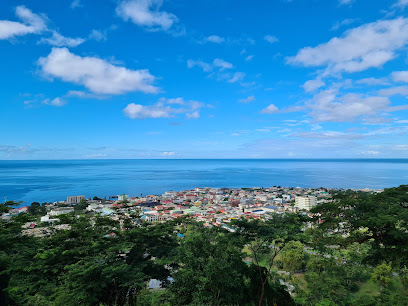
Titou Gorge
Explore the breathtaking beauty of Titou Gorge, where lush landscapes meet crystal-clear waters in the heart of Dominica's tropical paradise.
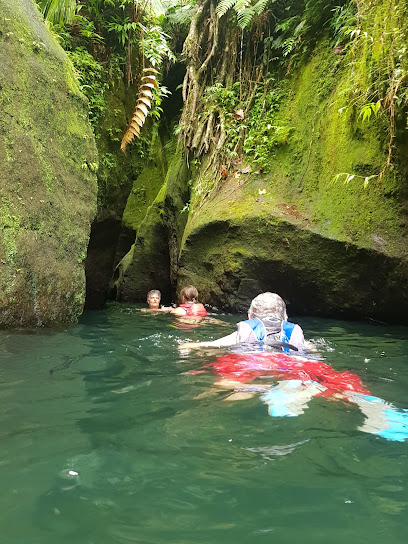
Mero beach
Discover the stunning Mero Beach in Dominica, where volcanic black sand meets crystal-clear waters for an unforgettable tropical experience.
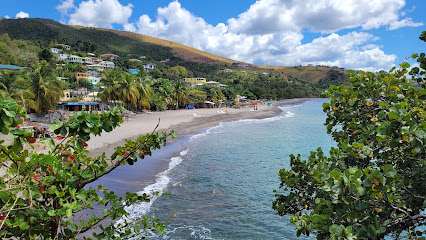
Purple Turtle Beach Club
Discover the vibrant atmosphere and delicious flavors at Purple Turtle Beach Club, a must-visit dining spot in Portsmouth's stunning Lagoon.
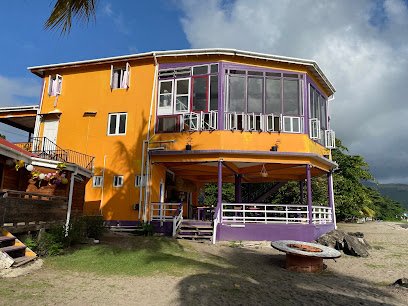
Champagne Reef, Dominica
Immerse yourself in the stunning beauty of Champagne Reef, Dominica – an underwater paradise filled with vibrant marine life and unforgettable snorkeling adventures.
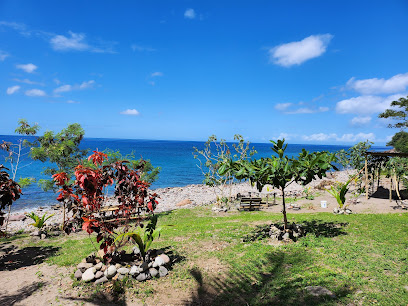
Cabrits National Park
Discover the beauty of Cabrits National Park, a natural paradise filled with hiking trails, stunning vistas, and rich history in Dominica.
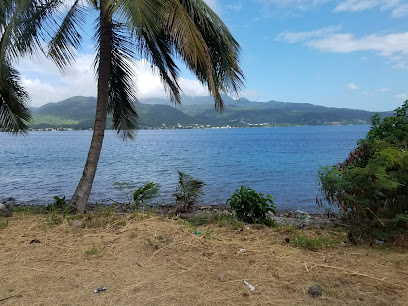
Fort Shirley
Explore the historic Fort Shirley in Portsmouth, Dominica. A captivating site showcasing colonial history with breathtaking views of the Caribbean landscape.
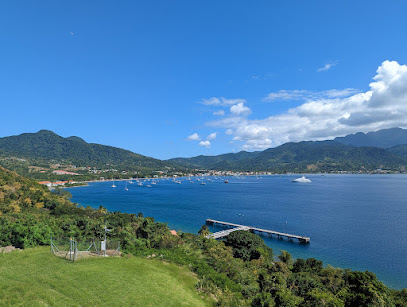
Morne Trois Pitons National Park
Explore the breathtaking landscapes and diverse ecosystems of Morne Trois Pitons National Park, a true gem of Dominica's natural heritage.
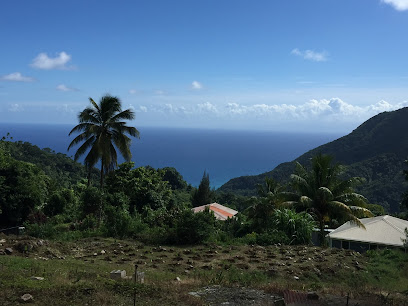
Papillote Tropical Gardens
Explore the breathtaking beauty of Papillote Tropical Gardens, a tranquil oasis in Trafalgar showcasing Dominica's rich biodiversity and vibrant flora.

Middleham Falls Dominica
Experience the breathtaking beauty of Middleham Falls, a hidden gem in Dominica, where nature's tranquility meets adventure in lush surroundings.
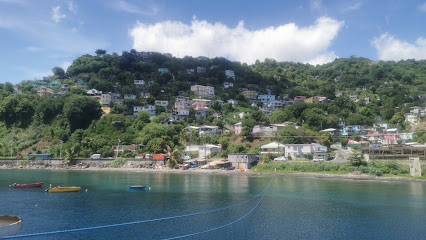
Douglas Bay Battery
Discover the rich history and stunning views at Douglas Bay Battery, a must-visit historical landmark in Portsmouth, Dominica.

Turtle Beach
Experience the serene beauty of Turtle Beach in Woodford Hill, Dominica, where golden sands meet crystal-clear waters for an unforgettable tropical retreat.
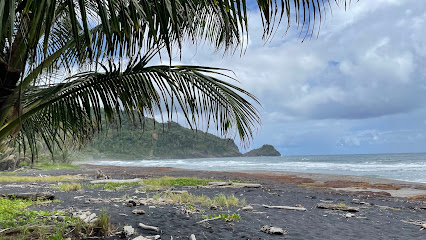
Unmissable attractions to see
Îles des Saintes
Explore the breathtaking beauty and vibrant culture of Îles des Saintes, a Caribbean archipelago offering adventure, relaxation, and culinary delights.
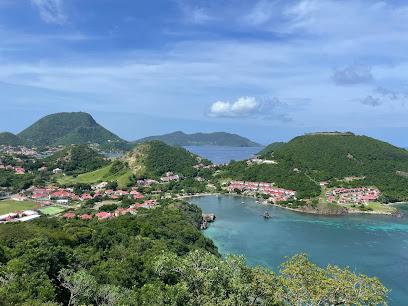
Rainforest Riding
Experience the lush landscapes of Portsmouth on horseback, blending adventure and nature in an unforgettable riding journey through the rainforest.
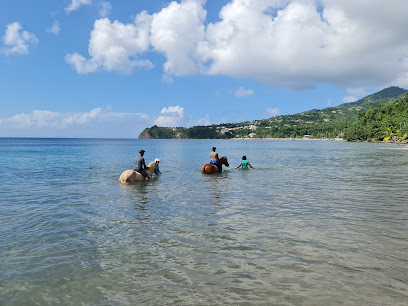
Boiling Lake
Explore the breathtaking Boiling Lake in Dominica, a geothermal wonder offering stunning hikes and mesmerizing natural beauty amidst lush landscapes.

Dominica Sculpture Sign - Photo Spot
Experience the vibrant artistry of Dominica at the iconic Sculpture Sign, a perfect photo spot in Roseau for capturing unforgettable memories.
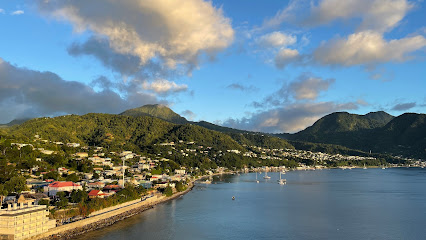
Markets, malls and hidden boutiques
Purple Turtle Beach Club
Discover the vibrant atmosphere and delightful cuisine at Purple Turtle Beach Club, Portsmouth's top dining destination with stunning ocean views.
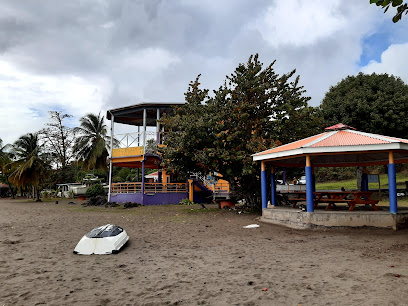
James Store
Explore James Store in Portsmouth, where vibrant shopping meets local culture in a delightful marketplace experience.
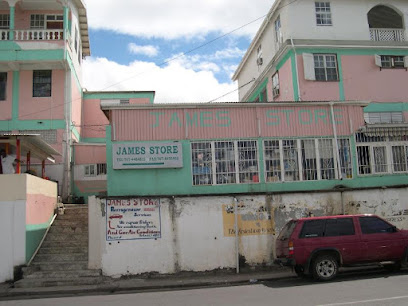
Northern Foods & Supplies
Explore the vibrant flavors of Portsmouth at Northern Foods & Supplies, your one-stop grocery store for local and international delights.
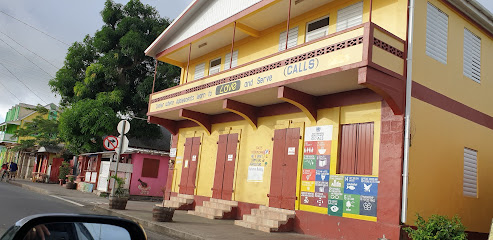
Savers Enterprises
Discover local flavors and essentials at Savers Enterprises, the premier grocery store in Portsmouth, offering a delightful shopping experience for tourists.
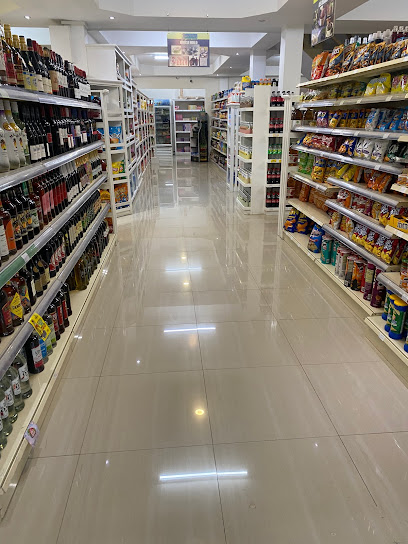
Sea Breeze Mini Mart and Bar
Experience the vibrant local culture at Sea Breeze Mini Mart and Bar, Anse De Mai's charming grocery store and bar with delicious local dishes and stunning views.

Yellow House Mini Mart
Discover the local flavors at Yellow House Mini Mart in Portsmouth – your gateway to authentic Dominican snacks and fresh produce.
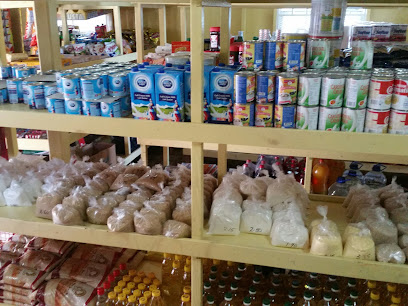
Duty Free Emporium
Discover an array of luxury goods at the Duty Free Emporium in Roseau, where tax-free shopping meets exceptional service.

Beach Avenue, Indian River, Dominica
Explore Beach Avenue in Indian River, Dominica: A charming shopping destination with unique clothing and a vibrant local atmosphere.
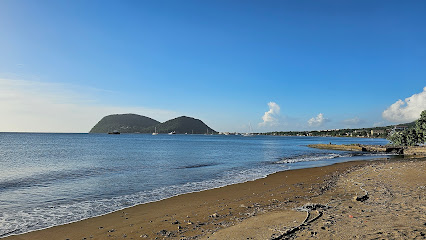
Mayra's Originals
Explore Mayra's Originals in Portsmouth for custom dressmaking, exquisite lingerie, and stylish swimwear, embodying fashion and creativity at its finest.
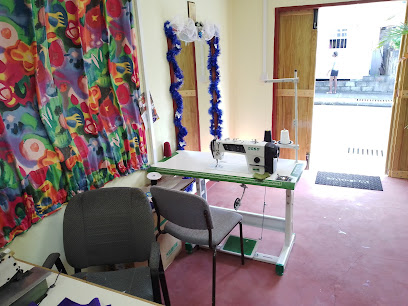
RAAS Fabric & Things
Explore the vibrant world of textiles at RAAS Fabric & Things in Portsmouth, where creativity meets quality fabrics for all your crafting needs.

SWEET TREATS by GLORINE
Experience the ultimate cake shop in Portsmouth, Sweet Treats by Glorine, where every bite is a celebration of flavor and creativity.

Un!k Shopping Mart
Discover local flavors and essentials at Un!k Shopping Mart, the perfect grocery stop for tourists in St. Joseph, Dominica.

FE MIMI MART
Explore FE MIMI MART in Portsmouth for a taste of local produce, unique Caribbean goods, and a vibrant shopping experience.

Yazz Variety Store
Explore Yazz Variety Store in Portsmouth for a delightful shopping experience filled with unique finds and friendly service.

Joan's Creative Hands
Explore the world of sewing at Joan's Creative Hands – your go-to destination for fabrics, tools, and creative workshops in Portsmouth.

Essential bars & hidden hideouts
Purple Turtle Beach Club
Discover the flavors of the Caribbean at Purple Turtle Beach Club, a vibrant dining experience with stunning ocean views in Portsmouth.
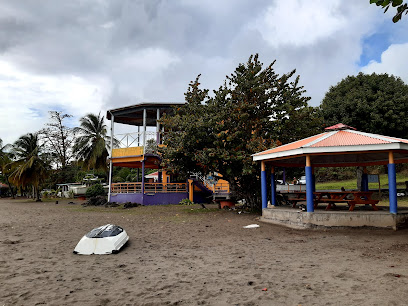
Hi Rise Beach Bar
Discover the vibrant atmosphere of Hi Rise Beach Bar in Roseau, where breathtaking views and local flavors create the perfect tropical getaway.

Oriental, C & D Restaurant and Beach Bar
Discover the culinary treasures of the Caribbean at Oriental, C & D Restaurant and Beach Bar, where every meal is a seaside escape.
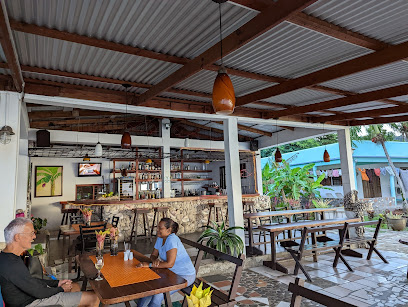
Roots Rock Bar & Restaurant
Indulge in authentic Caribbean cuisine at Roots Rock Bar & Restaurant, a culinary haven in Savanne Paille offering fresh seafood and vibrant atmosphere.
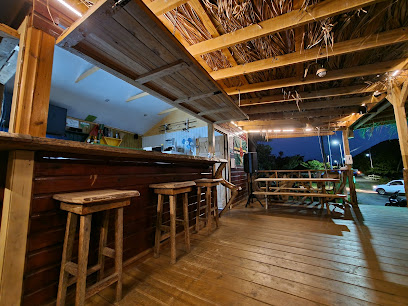
Soursop Bar & Grill
Experience the vibrant flavors of Caribbean cuisine at Soursop Bar & Grill in Portsmouth, a culinary gem for every traveler.
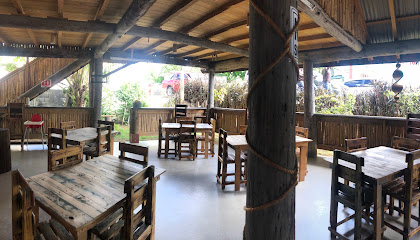
Infinity Restaurant Bar & Grill
Experience the vibrant flavors of the Caribbean at Infinity Restaurant Bar & Grill in Portsmouth, where every meal is a celebration of culinary excellence.
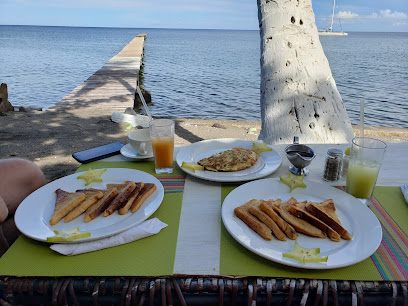
Bell Hall Beach Spot
Experience the relaxing beauty of Bell Hall Beach Spot, a perfect family-friendly destination in Portsmouth with stunning views and endless fun by the sea.
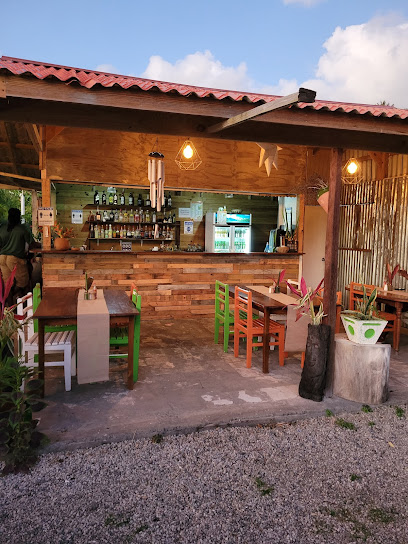
Sea Bird Bar & Grill
Experience the best of Caribbean cuisine and stunning lagoon views at Sea Bird Bar & Grill in Portsmouth.
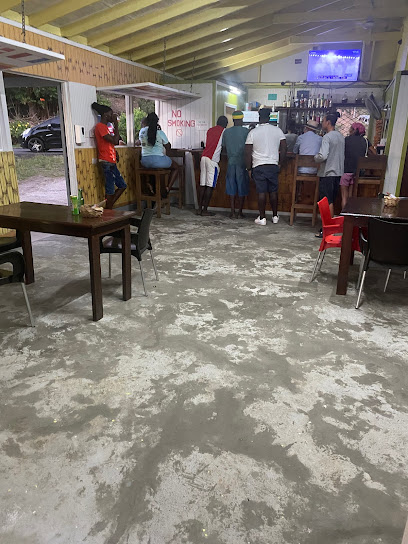
What Is Man Bar
Discover the vibrant flavors of the Caribbean at What Is Man Bar in Portsmouth, where culinary tradition meets lively atmosphere.

Kish Tree View Bar & Grill Plus Yacht Services
Experience exquisite dining and breathtaking lagoon views at Kish Tree View Bar & Grill in Portsmouth, where culinary delights meet yacht adventures.

Monty's
Dive into delightful seafood at Monty's, Portsmouth's premier restaurant offering fresh catches and a lively atmosphere.

Smithy's Hawaiian Shaved Ice & Cakes
Experience the refreshing delight of Hawaiian shaved ice and custom cakes at Smithy's in Portsmouth, a must-visit treat for every traveler.

Cherry Reggage Bar&Grill
Experience Caribbean flavors and vibrant atmosphere at Cherry Reggage Bar&Grill in Portsmouth, a must-visit culinary destination.
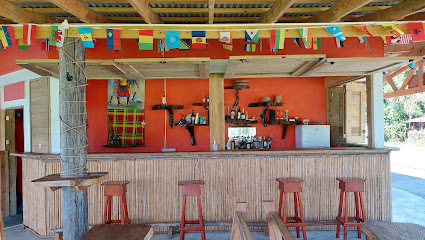
Coco Mangos bar and grill
Discover the flavors of the Caribbean at Coco Mangos Bar and Grill, where every meal is a celebration of taste and culture in Portsmouth.
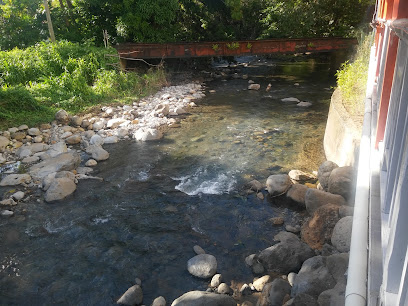
Sagittarius 2 Reggae Bar and Grill
Experience the vibrant flavors and lively atmosphere of Sagittarius 2 Reggae Bar and Grill in Portsmouth, Dominica – a true Caribbean gem.
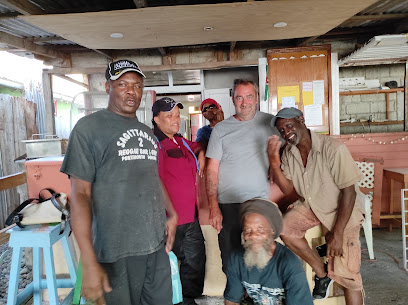
Local Phrases about Purple Turtle Beach
-
- HelloBoyo
[Boh-yoh] - GoodbyeJoune
[Joh-neh] - YesWi
[Wee] - NoNon
[Nohn] - Please/You're welcomePor favor
[Por fah-vohr] - Thank youMèsi
[Meh-see] - Excuse me/SorrySkizé mwen
[Skee-zay mwuhn] - How are you?Ki jan ou ye?
[Kee jahn oo yay?] - Fine. And you?Byen. E ou?
[Byehn. Ay oo?] - Do you speak English?Èske ou pale angle?
[Es-kuh oo pah-leh ahn-glay?] - I don't understandMwen pa konprann
[Mwuhn pah kohn-prahn]
- HelloBoyo
-
- I'd like to see the menu, pleaseMwen ta renmen wè meni an, silvouple
[Mwuhn tah rahn-mehn way meh-nee ahn, seel-voo-pluh] - I don't eat meatMwen pa manje vyann
[Mwuhn pah mahn-jay vee-ahn] - Cheers!Santé!
[Sahn-tay] - I would like to pay, pleaseMwen ta renmen peye, silvouple
[Mwuhn tah rahn-mehn pay-yay, seel-voo-pluh]
- I'd like to see the menu, pleaseMwen ta renmen wè meni an, silvouple
-
- Help!Edé mwen!
[Ay-day mwuhn!] - Go away!Alé!
[Ah-lay!] - Call the Police!Rele polis la!
[Ray-lay poh-lees lah!] - Call a doctor!Rele yon doktè!
[Ray-lay yohn dohk-tay!] - I'm lostMwen pedi
[Mwuhn peh-dee] - I'm illMwen malad
[Mwuhn mah-lahd]
- Help!Edé mwen!
-
- I'd like to buy...Mwen ta renmen achte...
[Mwuhn tah rahn-mehn ahsh-tay...] - I'm just lookingMwen jis gade
[Mwuhn zhees gah-day] - How much is it?Kòman yo pran li?
[Koh-mahn yoh prahn lee?] - That's too expensiveSa se twò chè
[Sah seh twuh sheh] - Can you lower the price?Ou ka ba pri a?
[Oo kah bah pree ah?]
- I'd like to buy...Mwen ta renmen achte...
-
- What time is it?Kisa lè li ye?
[Kee-sah lay lee yay?] - It's one o'clockLi genyen yon zè
[Lee jehn-yen yohn zay] - Half past (10)Demi pase dis
[Day-mee pah-say dees] - MorningMaten
[Mah-tehn] - AfternoonApremidi
[Ah-pray-mee-dee] - EveningAswè
[Ah-sway] - YesterdayYè
[Yay] - TodayJodi a
[Joh-dee ah] - TomorrowDemen
[Day-mehn] - 1Yon
[Yohn] - 2De
[Day] - 3Twaz
[Twayz] - 4Kat
[Kaht] - 5Senk
[Sank] - 6Sis
[Sees] - 7Sèt
[Set] - 8Wit
[Weet] - 9Nèf
[Nehf] - 10Dis
[Dees]
- What time is it?Kisa lè li ye?
-
- Where's a/the...?Kote genyen yon/la...
[Koh-teh jehn-yen yohn/lah...] - What's the address?Ki adres la?
[Kee ah-drehs lah?] - Can you show me (on the map)?Ou ka montre mwen (sou kat)?
[Oo kah mohn-tray mwuhn (soo kaht)?] - When's the next (bus)?Ki lè pwochen (bis)?
[Kee lay pwosh-ehn (bees)?] - A ticket (to ....)Yon tikè (pou ....)
[Yohn tee-kay (poo ....)]
- Where's a/the...?Kote genyen yon/la...
History of Purple Turtle Beach
-
Long before the arrival of European explorers, the Kalinago people, also known as Caribs, inhabited the area now known as Purple Turtle Beach. They fished in the clear waters, built canoes from local trees, and lived harmoniously with the natural environment. Artefacts, such as pottery fragments and tools, occasionally unearthed near the beach, offer glimpses into their rich cultural heritage.
-
In the 15th century, Christopher Columbus sighted Dominica on his second voyage to the New World. The island, including the area around Purple Turtle Beach, eventually became a point of contention between European powers. The French and British vied for control, leading to numerous skirmishes and treaties. The strategic location of the bay near the beach made it a valuable asset for naval operations during these colonial conflicts.
-
During the 18th and 19th centuries, the fertile lands around Purple Turtle Beach were converted into sugar plantations. Enslaved Africans were brought to Dominica to work on these plantations under brutal conditions. Remnants of old plantation buildings and machinery can still be found in the area, serving as a poignant reminder of this dark chapter in the island's history.
-
Following the abolition of slavery in 1834, Purple Turtle Beach saw significant changes. Freed slaves established small communities and engaged in subsistence farming and fishing. The beach became a communal space where locals gathered for social events and daily activities. This period marked the beginning of a more self-sufficient and resilient local culture.
-
In the mid-20th century, Dominica began to develop its tourism industry, and Purple Turtle Beach became a focal point for visitors seeking natural beauty and cultural experiences. Investments in infrastructure, such as the construction of nearby restaurants and small hotels, transformed the beach into a popular destination. Efforts to preserve the natural landscape were also initiated to ensure sustainable tourism.
-
Recognizing the ecological significance of Purple Turtle Beach, local and international organizations have launched various conservation initiatives. These efforts aim to protect the beach's delicate ecosystems, including its coral reefs and turtle nesting sites. Educational programs and community involvement have been key components in fostering a sense of stewardship among residents and visitors alike.
Purple Turtle Beach Essentials
-
Purple Turtle Beach is located in Portsmouth, Dominica. The nearest airport is Douglas-Charles Airport (DOM), approximately 45 kilometers away. From the airport, you can take a taxi or rent a car to reach Portsmouth. The journey typically takes around 1 hour by road. Additionally, ferries from neighboring islands like Guadeloupe and Martinique can bring you to Dominica's port in Roseau, from where you can take a taxi or bus to Portsmouth.
-
Transportation in Portsmouth is relatively straightforward. Taxis are readily available and can be booked in advance or hailed on the street. There are also local minibuses that operate between Portsmouth and other parts of the island. Renting a car is another convenient option for exploring the area at your own pace. Keep in mind that driving is on the left side of the road.
-
The official currency in Dominica is the Eastern Caribbean Dollar (XCD). Credit cards are accepted in many hotels, restaurants, and shops, but it is advisable to carry cash, especially in smaller establishments and rural areas. ATMs are available in Portsmouth where you can withdraw Eastern Caribbean Dollars.
-
Portsmouth, including Purple Turtle Beach, is generally a safe destination for tourists. However, it is advisable to take standard precautions. Avoid walking alone at night in unfamiliar areas and keep an eye on your belongings in crowded places. While there are no specific high-crime areas targeting tourists, it's best to stay vigilant and aware of your surroundings.
-
In case of emergency, dial 999 for immediate assistance. The local police station and medical facilities are available in Portsmouth. It is recommended to have travel insurance that covers medical emergencies. For minor health issues, there are pharmacies in the town where you can purchase over-the-counter medications.
-
Fashion: Do wear casual and comfortable clothing suitable for the tropical climate. Avoid overly revealing attire. Religion: Do respect local customs and traditions. Public Transport: Do be polite and respectful to drivers and fellow passengers. Don't eat or drink on public transport. Greetings: Do greet people with a friendly 'hello' or 'good day'. A handshake is also common. Eating & Drinking: Do try local delicacies and accept food offerings graciously. Don't refuse hospitality, as it is considered impolite.
-
To experience Purple Turtle Beach like a local, visit during the early morning or late afternoon when the beach is less crowded. Engage with locals, as they are often friendly and willing to share stories about the area. Don't miss trying the local seafood dishes at nearby beachside restaurants. For a unique experience, take a boat tour to nearby Cabrits National Park and explore its historic ruins and natural beauty.
Nearby Cities to Purple Turtle Beach
-
Things To Do in Castle Bruce
-
Things To Do in Roseau
-
Things To Do in La Plaine
-
Things To Do in Woodlands
-
Things To Do in English Harbour
-
Things To Do in Falmouth
-
Things To Do in Liberta
-
Things To Do in Freetown
-
Things To Do in All Saints
-
Things To Do in Bolands
-
Things To Do in Codrington
-
Things To Do in Jolly Harbour
-
Things To Do in Rodney Bay
-
Things To Do in Gros Islet
-
Things To Do in St. John's








